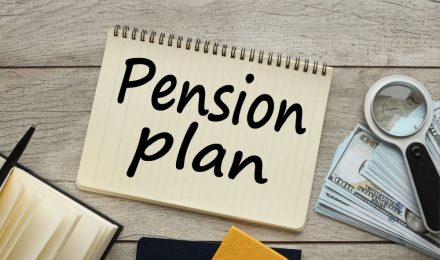For many people, college is a part of joining the workforce. While not everyone does or needs to go to college a the majority of people do go. According to the Bureau of Labor Statistics, in October 2018 69.1% of the high school graduates ages 16 to 24 were enrolled in a college or university. For some college is a fun time of learning and discovering yourself. For others it’s a stressful time of tests and homework. Either way graduation seems like the end of the college experience. However, college can become a long term problem due to student loans and debt.
Student loans for many are part of the college experience. 73% of students graduate with student loans. The problem is these loans can follow you for the rest of your life. Currently 44.7 million Americans have collectively 1.56 Trillion Dollars in debt. 30-39 year olds as a group hold 461 billion in student loans. There are also 3.2 million people who are past 60 years old with student loans that still need to be paid off. Imagine working until you retire, only to still have students loans that need to be paid.
Defaulting not a good option. Defaulting on your loans can hurt your credit, or can get your wages garnished. About 4.2 million people are in default on their loans. When you are in default of your loans, you are no longer eligible for loan forgiveness, modification, deference, forbearance, or consolidation until you rehabilitate your loans. You are also unlikely to be able to be able to get a loan for a car or other item, and even if you are successful your interest rate will skyrocket.
Very few people get loan forgiveness, so you are likely to have to pay off your loans yourself. Don’t plan on somehow getting out of it. Even filing for bankruptcy doesn’t necessarily change what you owe in student loans. When paying off student loans faster and more effectively there are 4 steps to take. The first step is to find the right loan. Try shorter loan repayment plans. Not only will they have you paid off sooner, they have less interest compounding time, so you’ll end up paying less overall. These types of loans may have a higher payment rate per month, but remember you’re paying less in the long run.
Secondly, prioritize your student loans. Remind yourself that defaulting is not an option. Work your budget around paying at least the minimum payment on your student loans. Always pay on time! One great way to never have to worry about a late payment is to set up auto payments. Making your loans a priority will help you keep up with them. Always pay your student loans first.
Don’t only make minimum payments. The third step is to pay as much as you can whenever you can. If you have some money left over one month, put it towards your student loan. Every little bit that you pay now, you won’t pay later. They also don’t charge you interest on what you’ve already paid, so pay as much as you can. Minimum payments are just that, minimums. Always pay as much more as you can.
Also make extra payments! However, when doing this remember to contact your lender (preferably in writing) that the extra payment is to go toward the principle only. This means that the extra payment won’t just be held and put towards next months payment. Having it held doesn’t help lower the amount of interest you will end up paying. So make extra payments, but make sure you are smart about them.
With the extra payments, anytime you come into some money, give it back to your student loan debt. You’ll end up saving more than you spent and have your loan paid off earlier. So next tax return, next bonus, next anything that gives you some extra money, pay off your student loans.
Finally, you may want to refinance them with a lower interest rate. Lenders offer interest rates as low as 2.5%. That’s much lower than the federal student loan interest rates. As well as lower than in-school private loan rates. The way refinancing works is you find somewhere that will offer a lower interest rate. Apply to get a loan from them. If you are accepted you use that loan to pay off your student loans. Then you pay the new lender back with less interest attached. Therefore saving you money.
Getting approved may prove difficult, as they look at many things before approving you. They’ll check your credit, income, debt and other things before considering you. They need to know you really can pay them back. So, you may want to apply to multiple lenders to get the best chance of getting the opportunity of refinancing.
Sometimes you simply can’t afford pay them back no matter how hard you try, and may default on your loans. Defaulting hopefully will never happen to you, as it can add years to paying your loan back and can add collections money to what you owe. There are solutions before just defaulting. Federal student loans can be deferred for up to 3 years if the student has financial need. If you do default, you’ll want to enter a student loan default rehabilitation program as soon as possible. These programs can restore damaged credit, which will help you get a future loan.
Student loans are becoming a crisis in the United States. Almost no one can afford school out of pocket, so they resort to loans. Unfortunately, many then have the problem of not being able to pay them back. However, with these strategies, you can work to pay your student loans back faster, and therefore pay less overall. Not only are these good strategies for student loans, but they can help you get out of any sort of debt. Start working today to be debt free.
For many people, college is a part of joining the workforce. While not everyone does or needs to go to college a the majority of people do go. According to the Bureau of Labor Statistics, in October 2018 69.1% of the high school graduates ages 16 to 24 were enrolled in a college or university. For some college is a fun time of learning and discovering yourself. For others it’s a stressful time of tests and homework. Either way graduation seems like the end of the college experience. However, college can become a long term problem due to student loans and debt.
Student loans for many are part of the college experience. 73% of students graduate with student loans. The problem is these loans can follow you for the rest of your life. Currently 44.7 million Americans have collectively 1.56 Trillion Dollars in debt. 30-39 year olds as a group hold 461 billion in student loans. There are also 3.2 million people who are past 60 years old with student loans that still need to be paid off. Imagine working until you retire, only to still have students loans that need to be paid.
Defaulting not a good option. Defaulting on your loans can hurt your credit, or can get your wages garnished. About 4.2 million people are in default on their loans. When you are in default of your loans, you are no longer eligible for loan forgiveness, modification, deference, forbearance, or consolidation until you rehabilitate your loans. You are also unlikely to be able to be able to get a loan for a car or other item, and even if you are successful your interest rate will skyrocket.
Very few people get loan forgiveness, so you are likely to have to pay off your loans yourself. Don’t plan on somehow getting out of it. Even filing for bankruptcy doesn’t necessarily change what you owe in student loans. When paying off student loans faster and more effectively there are 4 steps to take. The first step is to find the right loan. Try shorter loan repayment plans. Not only will they have you paid off sooner, they have less interest compounding time, so you’ll end up paying less overall. These types of loans may have a higher payment rate per month, but remember you’re paying less in the long run.
Secondly, prioritize your student loans. Remind yourself that defaulting is not an option. Work your budget around paying at least the minimum payment on your student loans. Always pay on time! One great way to never have to worry about a late payment is to set up auto payments. Making your loans a priority will help you keep up with them. Always pay your student loans first.
Don’t only make minimum payments. The third step is to pay as much as you can whenever you can. If you have some money left over one month, put it towards your student loan. Every little bit that you pay now, you won’t pay later. They also don’t charge you interest on what you’ve already paid, so pay as much as you can. Minimum payments are just that, minimums. Always pay as much more as you can.
Also make extra payments! However, when doing this remember to contact your lender (preferably in writing) that the extra payment is to go toward the principle only. This means that the extra payment won’t just be held and put towards next months payment. Having it held doesn’t help lower the amount of interest you will end up paying. So make extra payments, but make sure you are smart about them.
With the extra payments, anytime you come into some money, give it back to your student loan debt. You’ll end up saving more than you spent and have your loan paid off earlier. So next tax return, next bonus, next anything that gives you some extra money, pay off your student loans.
Finally, you may want to refinance them with a lower interest rate. Lenders offer interest rates as low as 2.5%. That’s much lower than the federal student loan interest rates. As well as lower than in-school private loan rates. The way refinancing works is you find somewhere that will offer a lower interest rate. Apply to get a loan from them. If you are accepted you use that loan to pay off your student loans. Then you pay the new lender back with less interest attached. Therefore saving you money.
Getting approved may prove difficult, as they look at many things before approving you. They’ll check your credit, income, debt and other things before considering you. They need to know you really can pay them back. So, you may want to apply to multiple lenders to get the best chance of getting the opportunity of refinancing.
Sometimes you simply can’t afford pay them back no matter how hard you try, and may default on your loans. Defaulting hopefully will never happen to you, as it can add years to paying your loan back and can add collections money to what you owe. There are solutions before just defaulting. Federal student loans can be deferred for up to 3 years if the student has financial need. If you do default, you’ll want to enter a student loan default rehabilitation program as soon as possible. These programs can restore damaged credit, which will help you get a future loan.
Student loans are becoming a crisis in the United States. Almost no one can afford school out of pocket, so they resort to loans. Unfortunately, many then have the problem of not being able to pay them back. However, with these strategies, you can work to pay your student loans back faster, and therefore pay less overall. Not only are these good strategies for student loans, but they can help you get out of any sort of debt. Start working today to be debt free.



